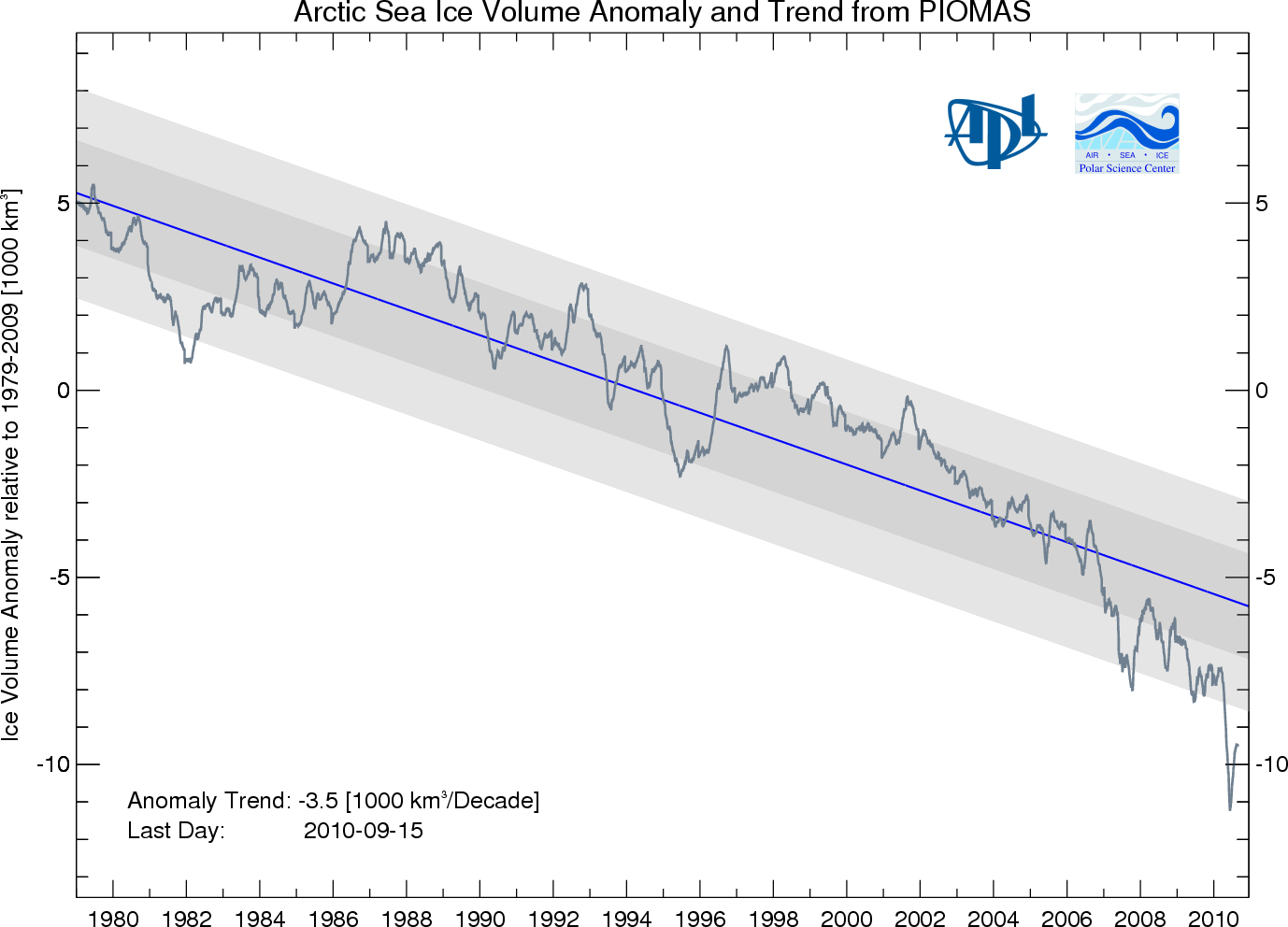PIOMAS tells us that ice thickness is at an all time low. Here is their June forecast :
End of June: According to our model retrospective simulations, the ice in the Arctic has continued to thin at a remarkable rate. The statistical method based on the PIOMAS model analysis now is projecting a new record low ice extent. The best predictors are G1.0 (area withless than 1.0 m of ice) and G0.4 (area with less than 0.4 m of ice) which give nearly identical results. Using the same one as last month (G1.0) the predicted extent is 3.96 +/- 0.34 million square kilometers. The R2 value for this predictor is 0.84. which now indicates a high degree of skill in the forecast.
Joe Romm and Mark Serreze agreed :
As Arctic sea ice shrinks faster than 2007, NSIDC director Serreze says, “I think it’s quite possible” we could “break another record this year.”
GISS tells us that this is the hottest year ever, and that Arctic temperatures have been running well above normal.
Thinnest ice, hottest temperatures, and expert forecasts. Surely we must have shattered the record this year! It would be a miracle if there is any ice left.
But wait, ice extent is currently 30% higher than 2007. The numbers don’t add up.
“Science is the belief in the ignorance of the experts” – Richard Feynman




“Roll up roll up”, watch the thermogeddon brigade spin, spin spin!
My word they are desperate, the Cancun train crash, ( did you like what I did there? ), will be something to behold. Order popcorn.
3.96mm sq km for the low does not seem to be wrong by much (is a little high in fact) based on the chart supplied with this writeup. So how come it was far from a new low?
As one digs into this issue, it rapidly becomes clear that ice extent is difficult to quantify, because much of the surface is taken up by fractured ice with some percentage of open water.. Given wind compaction and overnight freezing there can be sharp fluctuations in the measured ice extent.
PIOMAS was afaik an effort to estimate ice volume as well as extent. It is unclear how the measured PIOMAS anomaly recovered as sharply as indicated from its low earlier in the arctic summer. Until the methodology is laid out more fully, it is difficult to have good confidence in the model’s skill.
Since you specialize in sea ice, it is about time to be a bit more specific about numbers and graphs. The graph you use seems to be from DMI, and that is probably not what PIOMAS and Romm & Serry are talking about. DMI30 is currently at about 4, JAXA30 at about 5.
By DMI30 I mean “ice extend above 30% according to DMI”.
One should also distinguish between DMImin and DMIsept.
Correction: Should be JAXA15, not JAXA30.